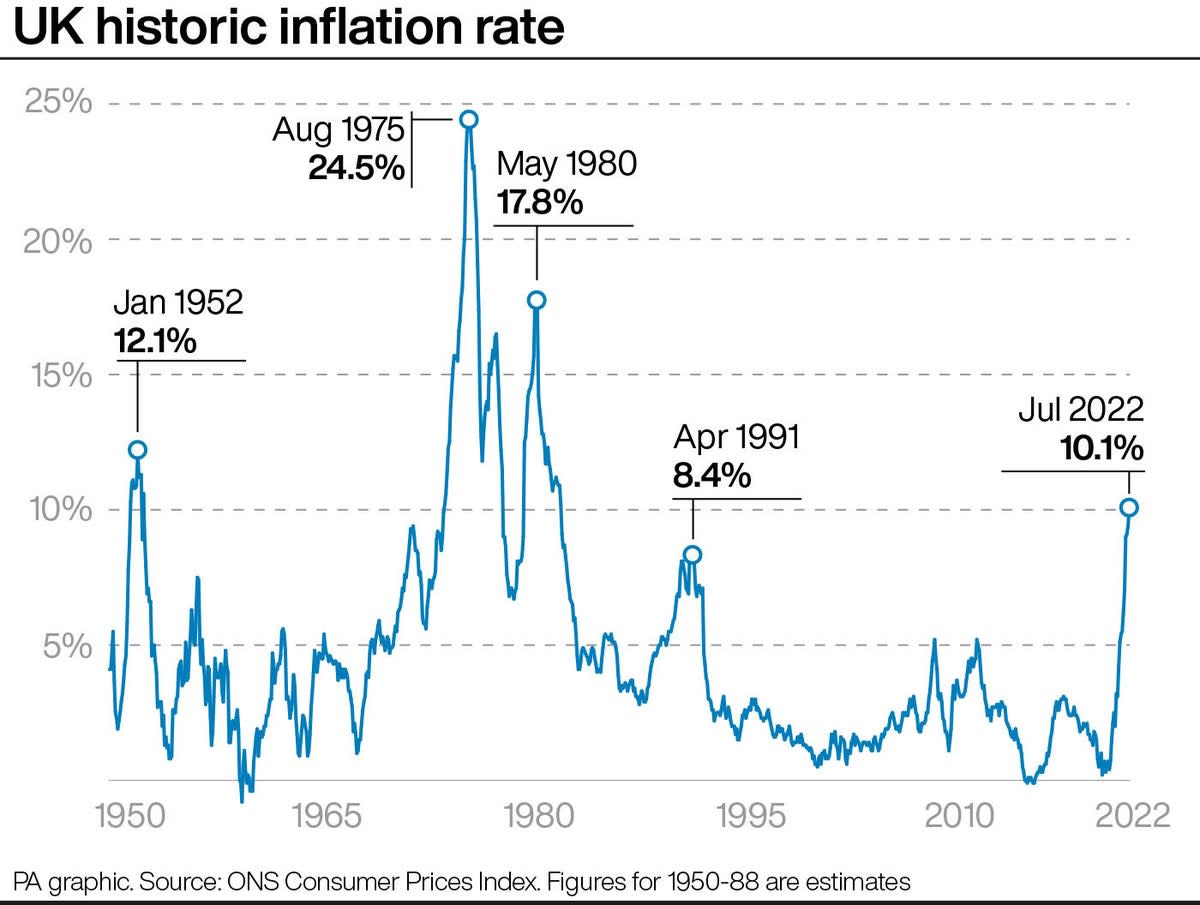How does the UK’s inflation at 10.1% compare with the rest of Europe?

The UK’s inflation rate is in double digits for the first time in 40 years, with soaring energy costs leading prices higher across Europe after Russia’s invasion of Ukraine.
Consumers all over the continent are having their spending power squeezed in the biggest cost-of-living crisis in decades, but how do overall inflation rates compare on either side of the English Channel?
Britain’s Consumer Price Index rocketed to 10.1% for July, the highest since the early 1980s, having been at 9.4% in June . Average inflation for the countries sharing the euro -- like France, Spain and Germany -- is expected to reached 8.9% for July when the data is published tomorrow, up from 8.6% in June.
For the whole of the EU including countries with their own currency -- such as Denmark, Poland and Sweden -- it was at 9.6% in June, not far off the double-digit milestone.
Malta had the lowest rate of inflation for June, at 6.1%, with France next at 6.5%. Germany’s was 8.2% and Spain was at 10%.
National inflation rates vary, mainly reflecting each country’s differing degrees of exposure to imported energy and food, an area where price rises also bit hard, especially in the UK. The extent of consumption of alcohol and tobacco also play a part, since prices there have also made some of the biggest leaps. Exact blends of supply and demand in individual nations always differ across the various sectors of national economies, creating the wide range in inflation readings.
City experts don’t think we’ve seen the worst of double-digit inflation yet, but neither do they expect it to last, in Europe or in the UK.
“Inflation is likely to hover around or a bit above 12% from October through to about February,” said James Smith, developed market economist at Dutch bank ING.
“Thereafter the energy impact will gradually dissipate and in fact, by 2024, [UK ] inflation is likely to be a bit below the Bank of England’s 2% target – assuming that energy prices do indeed begin to gradually edge lower from mid-2023”.
Right now, however, there is no escaping the outsize impact of energy costs and the degree of exposure between countries to the EU’s swinging package of sanctions against Russia. The highest European inflation rates were in the Baltic states, the countries most within Russia’s orbit. Inflation in Estonia hit 22% and Lithuania’s was at 20.5%.
Currency effects play an important role too.
The euro has been falling against the dollar, losing around 16% against the US currency since January 2021, and at one point touching parity with it, reducing and then briefly wiping out the premium which the shared currency had over its trans-Atlantic counterpart and so increasing the cost for nations using it to buy goods and commodities denominated in dollars -- including oil and gas.
The pound, meanwhile, has never recovered the $1.47 level it held in the run up to the Brexit referendum in 2016, diluting its purchasing power on global commodities markets. It has also weakened in the long term against the euro, increasing the relative cost of imports from the EU -- which remains the UK’s biggest market even after Brexit -- pushing up inflation even before it rocketed further due to Vladimir Putin’s invasion of Ukraine.

 Yahoo News
Yahoo News 
